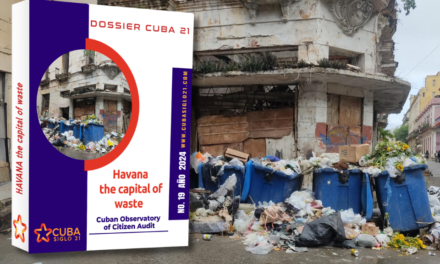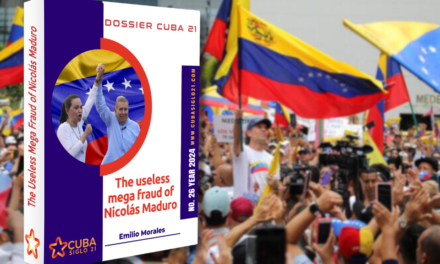Summary
Cuba today presents the tragedy of having been transformed into a failed (collapsed) regime of governance together with a fragile State of anomic institutions propped up by bayonets (the only functional institutions are the repressive ones: the Ministry of the Interior and the FAR), administered by a mediocre government and controlled by a voracious oligarchy that appropriates the country’s wealth through a super holding company known as GAESA.
Today the country is being shaken not by an economic crisis like the one that occurred in the 1990s, famously remembered as the Special Period, but by a multi-systemic crisis that has generated permanent citizen protests unseen in 63 years of dictatorship. Despite the repression and the policy of terror unleashed by the government to crush them protests continue. By the end of 2022, more than 3,400 protests had been registered in the country, which were documented by the Cuban Observatory of Conflicts. These protests are the response of the population’s rejection of the system and the chaotic measures implemented in the financial and retail sectors in the last two years by the government team headed by Miguel Díaz-Canel, which have been disastrous. First the MLC stores, then the implementation of the so-called Monetary Reordering Task and more recently the Exchange Market.
As a result of this situation, in the last 12 months more than ¼ million citizens have left the country for the US. At the end of Fiscal Year 2022, there were 23,996 registered departures through legal channels, 224,607 arrivals of Cubans registered at U.S. border posts through illegal channels and around 7,000 more who arrived through maritime channels. But if we analyze the figures from January 1 to December 31, 2022, the numbers are even more shocking: a little more than 300,000 Cubans have arrived in the U.S.
Today, the governance system is controlled by a mafia that has concentrated the economic power of the country under the aegis of a monopoly called Grupo de Administración Empresarial S.A (GAESA) , which was founded by Army Corps General Julio Casas Regueiro, and which structurally belongs to the Ministry of the Armed Forces (FAR), but which in practice is nothing more than a gigantic holding company managed by the Castro family and a group of oligarchs close to it. This holding is above all institutional control or auditing, including that of the FAR itself. This monopoly controls the main and most strategic sectors of the economy and more than 95% of the country’s finances. This immense power has left the bureaucratic-institutional government, which is also controlled by this oligarchic mafia, without resources that would allow it to guarantee the most elementary basic needs of the population such as food, health services, transportation, electricity, and access to drinking water.
It is in this oligarchic context of extreme voracious plundering -which does not allocate prioritized resources as under the former communist state to social needs, but also does not allow economic freedoms for citizen initiative to generate social prosperity- that the uncontrolled operation of GAESA has led the governance system to its collapse.
GAESA has become a business octopus that little by little has spread throughout the most lucrative sectors of the Cuban economy. With the acquisition by decree of Corporación CIMEX S.A, the company Habaguanex, the company Palco, the Special Development Zone Mariel (ZEDM) and a significant part of ETECSA, to mention the most important ones, this gigantic monopoly currently covers about 70% of the economy, an enormous leap in only six years. See Figure 1.
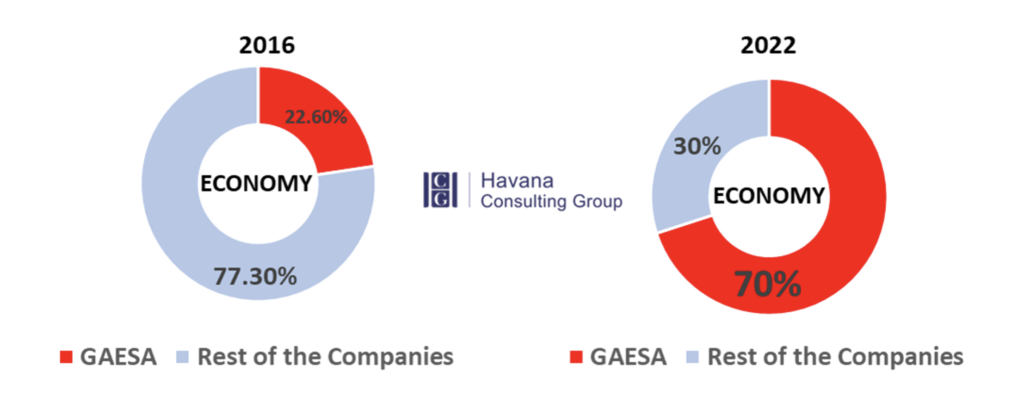
On the other hand, with the strategic award of the International Financial Bank (BFI) in 2016, in just six years it has taken control of 95% of the country’s finances. This has been the hardest blow GAESA has dealt against the Cuban state economy in its silent strategy to take over the country’s wealth. See Figure 2.
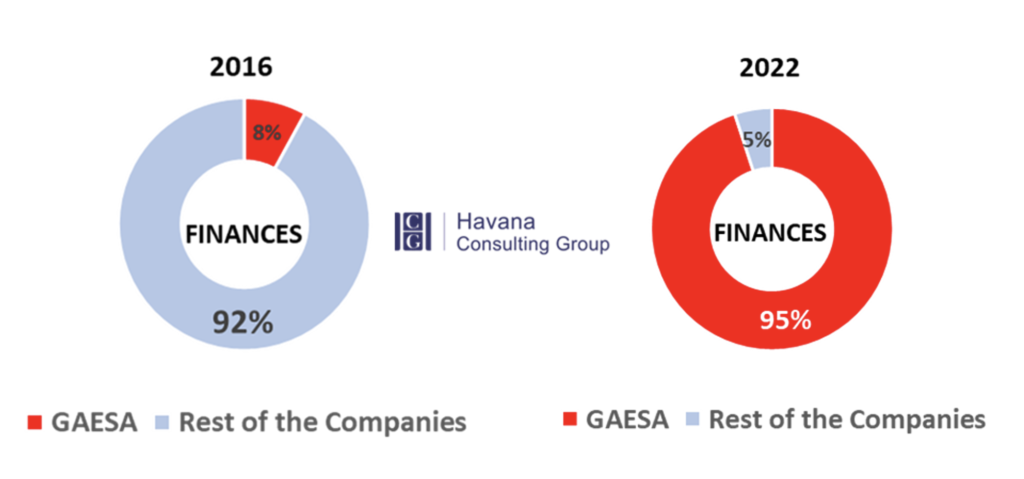
At present, GAESA is not only directly present in the most lucrative sectors of the economy through business structures subordinated to it, but also exercises its power and control practically over the rest of the business structures in various sectors of the national economy. To this end, it uses two means of control. The first, by placing high-ranking officials at the head of these companies . The second is a kind of indirect power exercised by financial means through the International Financial Bank (BFI). This banking entity belonging to GAESA controls the financial activities of all the companies that operate under its umbrella and about 95% of the flow of commercial import and export operations carried out by all the national and foreign companies that operate in the Cuban market. This has considerably unbalanced the institutional economic power in the country. It has placed at one stroke about 95% of the country’s finances in the hands of GAESA and has left the institutionalized bureaucratic government practically without financial resources subordinating it to this new supra-power.
In other words, this mafia elite in power is the one that has under its control almost every dollar that enters and leaves the island.
Figure 3. Structure and growth of Grupo de Administración Empresarial S.A. (GAESA), 2023
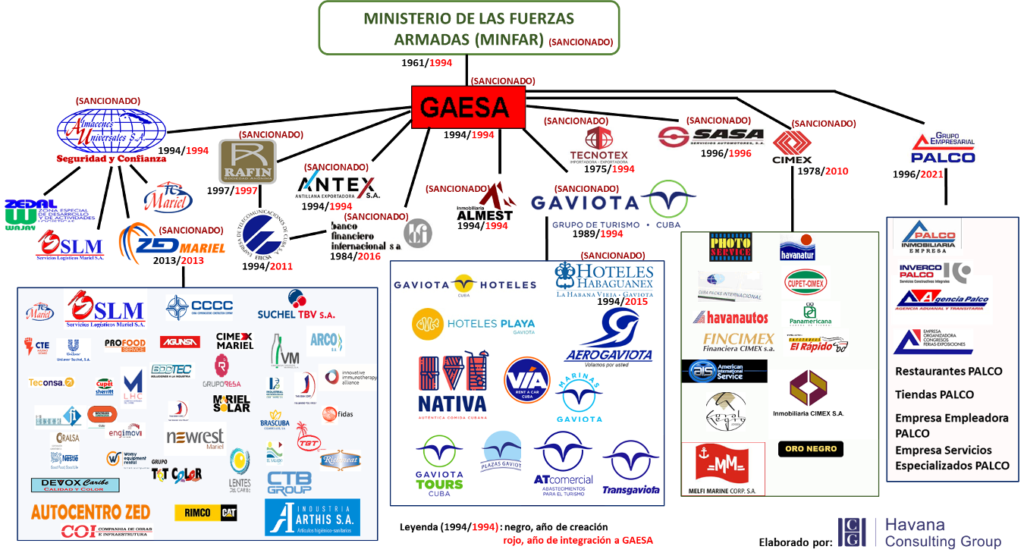
Download complete Dossier Cuba 21 Nos 2 in PDF “Cuba: GAESA and the collapse of the regime “


